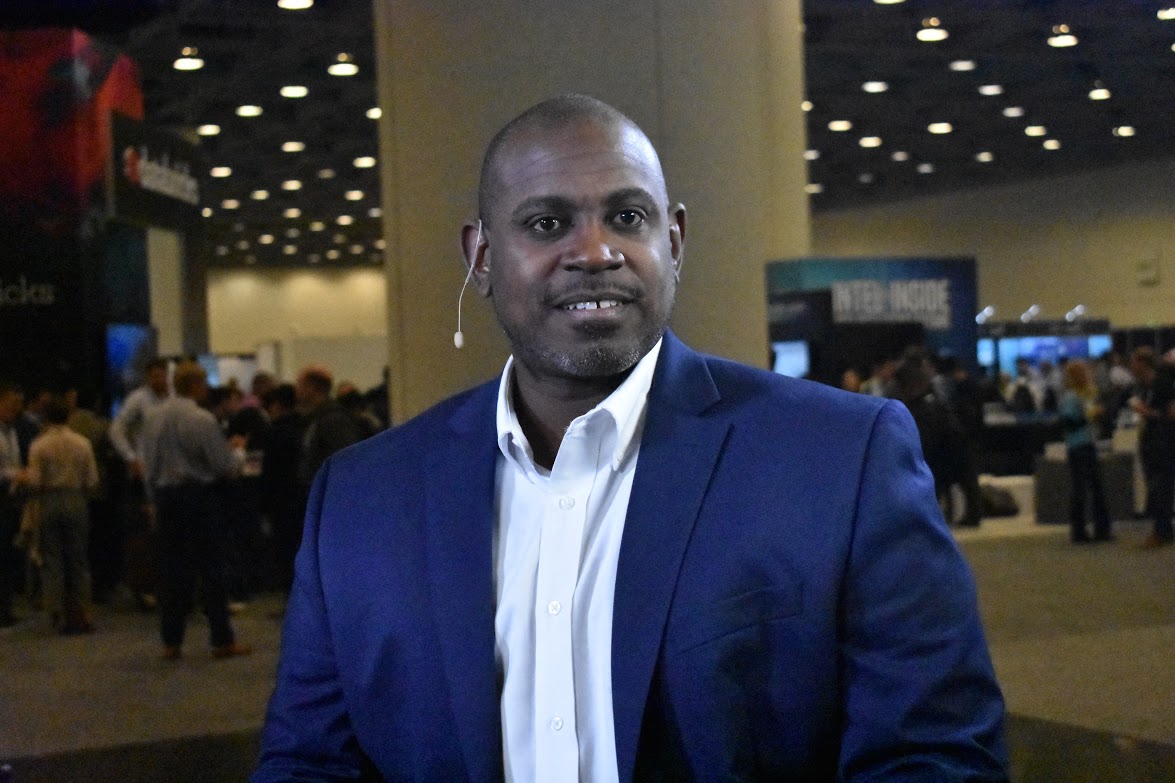 EMERGING TECH
EMERGING TECH
 EMERGING TECH
EMERGING TECH
 EMERGING TECH
EMERGING TECH
Artificial intelligence workloads are set to increase 12-fold by 2020, according to Michael Greene (pictured), vice president, Software and Service Group, and general manager of system technologies and optimization at Intel Corp. Scalable hardware-software integrations better get cracking to accommodate them, Greene said today during Spark Summit in San Francisco, California.
“We need to make sure that we have the silicon and the software, and that’s where Big DL [Intel’s open-source distributed deep learning project fits] — to pull those two together to make sure that we’re getting the full benefit of the solution,” Greene said.
“Hardware without software is a brick,” Greene told George Gilbert (@ggilbert41) and David Goad (@davidgoad), co-hosts of theCUBE, SiliconANGLE Media’s mobile live streaming studio. (* Disclosure below.)
Intel open-sourced BigDL primarily to cull increased scalability for the project from contributors like the Apache Spark streaming data engine and others, he stated.
Additional preparations Intel has made for exploding AI are two recent acquisitions, Greene said, claiming that the microchip giant is now a “solutions company.”
The first acquisition is Altera Corp., maker of Programmable Logic Devices and Field-Programmable Gate Array-based hardware accelerators. The second, Nervana Systems, layers specialized AI software on top.
Compute at the edge and the 5G network will enable AI technologies to move from simply training models to inferring and acting on data, Greene explained. He gave the example of a smart camera (facial recognition in cameras is an AI technology familiar to all). Initial recognition can set off a chain of events.
“Let’s assume that it’s being used for highway patrol. If you identify the car speeding, then send the information,” Greene said. AI at the edge can recognize speeders so that footage of safe drivers need not be wastefully moved about the network, he concluded.
Watch the complete video interview below, and be sure to check out more of SiliconANGLE’s and theCUBE’s independent editorial coverage of Spark Summit 2017. (* Disclosure: DataBricks Inc. sponsored this Spark Summit 2017 segment on SiliconANGLE Media’s theCUBE. Neither DataBricks nor other sponsors have editorial control over content on theCUBE or SiliconANGLE.)
Support our open free content by sharing and engaging with our content and community.
Where Technology Leaders Connect, Share Intelligence & Create Opportunities
SiliconANGLE Media is a recognized leader in digital media innovation serving innovative audiences and brands, bringing together cutting-edge technology, influential content, strategic insights and real-time audience engagement. As the parent company of SiliconANGLE, theCUBE Network, theCUBE Research, CUBE365, theCUBE AI and theCUBE SuperStudios — such as those established in Silicon Valley and the New York Stock Exchange (NYSE) — SiliconANGLE Media operates at the intersection of media, technology, and AI. .
Founded by tech visionaries John Furrier and Dave Vellante, SiliconANGLE Media has built a powerful ecosystem of industry-leading digital media brands, with a reach of 15+ million elite tech professionals. The company’s new, proprietary theCUBE AI Video cloud is breaking ground in audience interaction, leveraging theCUBEai.com neural network to help technology companies make data-driven decisions and stay at the forefront of industry conversations.